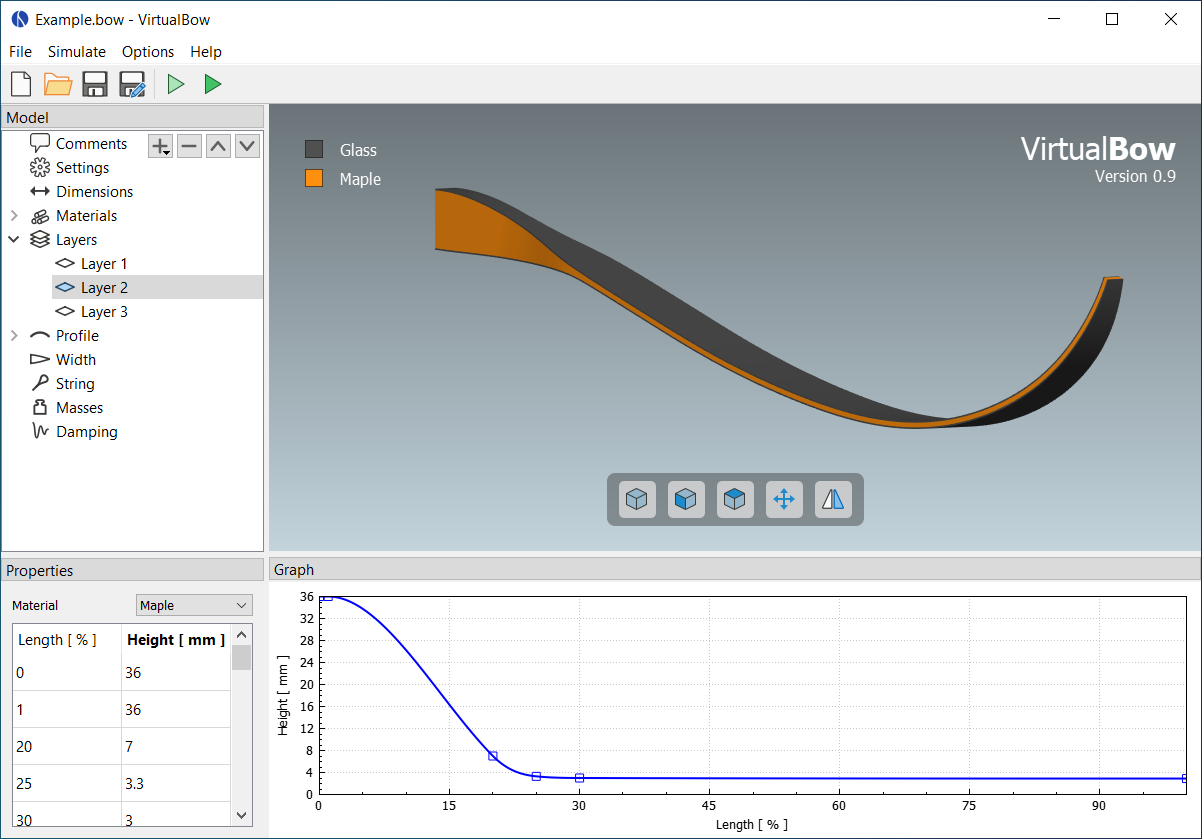Model Editor
The model editor is the first thing you will see when opening VirtualBow. Here you can design your bows, specify their physical properties and start simulations to investigate their performance.

Loading and saving files
Use the file menu and/or the toolbar buttons on the top to create, open and save bow models.
Bow models are stored as .bow files on disk, which contain all the physical parameters of the bow.
You could share those files with other users and they would be able to open and view your creations.
Note: VirtualBow's goal is to keep compatibility with older
.bowfiles as much as possible, so you should be able to open files that were created with older versions. Keep in mind though that saving will overwrite the file in the new format.
Editing the bow model
The main view of the editor is a 3D visualization of the bow's current geometry. Use the mouse to rotate (left button), shift (middle button) and zoom (mouse wheel) the perspective. More view options are available through the buttons on the bottom. Besides this 3D view, the editor interface contains three additional panels:
-
Model: The model tree on the top left shows how the bow model is organized, with various categories of physical properties. If an item in the model tree is selected, its details are shown in the Properties and/or the Graph panels. Some categories can be edited in the tree by adding, removing or renaming items, namely Materials, Layers and Profile.
-
Properties: The property editor shows the details of the currently selected item in the model tree. Here you can view and edit the physical properties of the bow model.
-
Graph: The graph view will show any graphs/plots that are associated with the selected item in the model tree. The graphs reflect the current properties and change as the properties are being edited.
Note: The physical units that are used throughout the model editor can be changed under Options - Units.
Running Simulations
Simulations can be started with the Simuate menu or by clicking one of the toolbar buttons. Any changes to the bow are automatically saved and the VirtualBow solver is invoked on the model file. There are two different simulation modes:
-
Statics: The static simulation analyzes the bow as it is being drawn from brace height to full draw. One of the results is the force/draw curve, for example. This mode is called static since the bow is considered to be in static equilibrium at each stage of the draw.
-
Dynamics: The dynamic simulation analyzes the bow and arrow in motion as the string is released from full draw. It adds things like arrow speed and degree of efficiency to the results. Since it requires the initial state of the bow at full draw, the dynamic simulation will always be preceded by a static simulation as well.
The simulation results are stored as a .res file next to the model file and automatically opened in the result viewer for analysis.